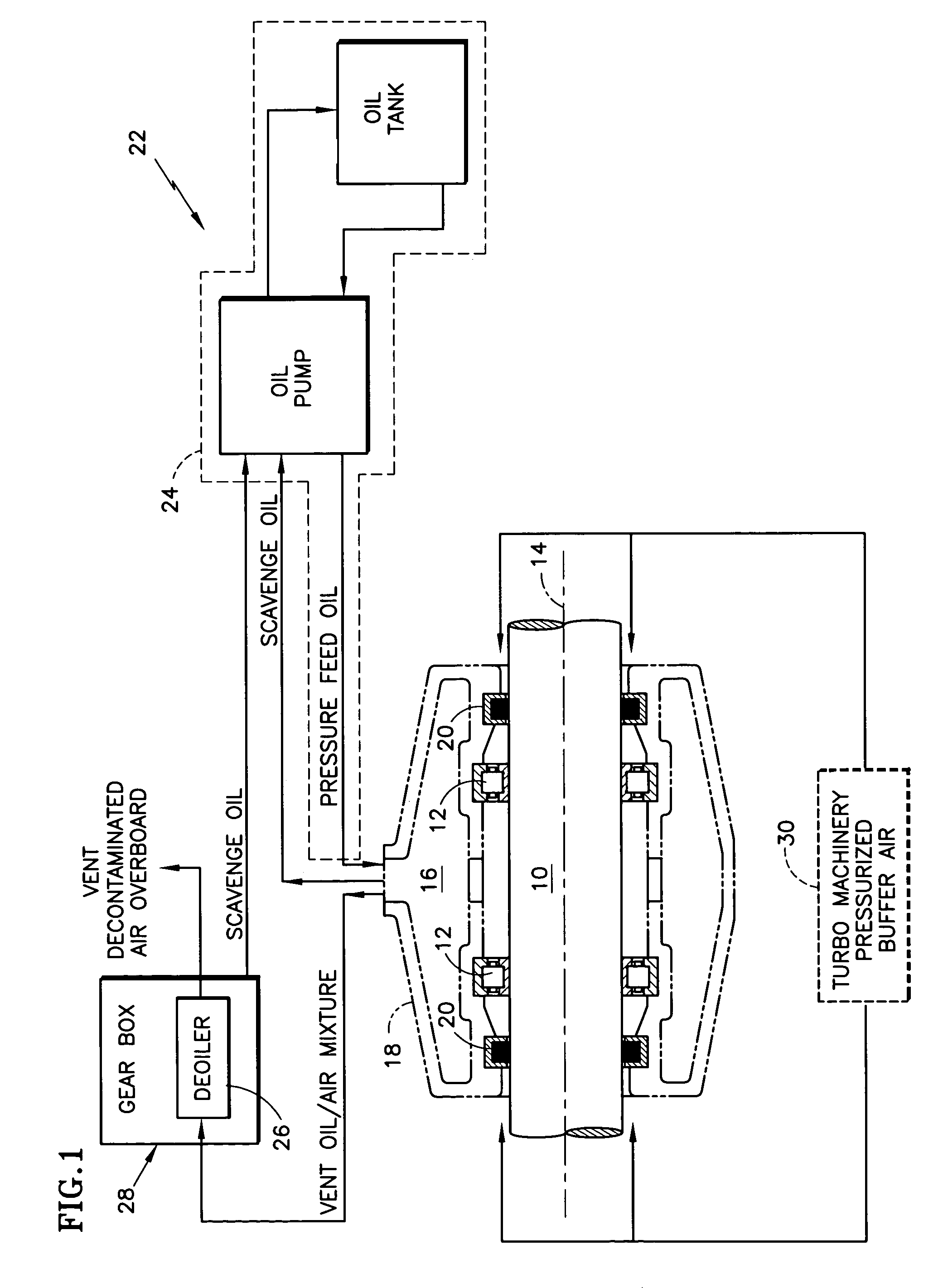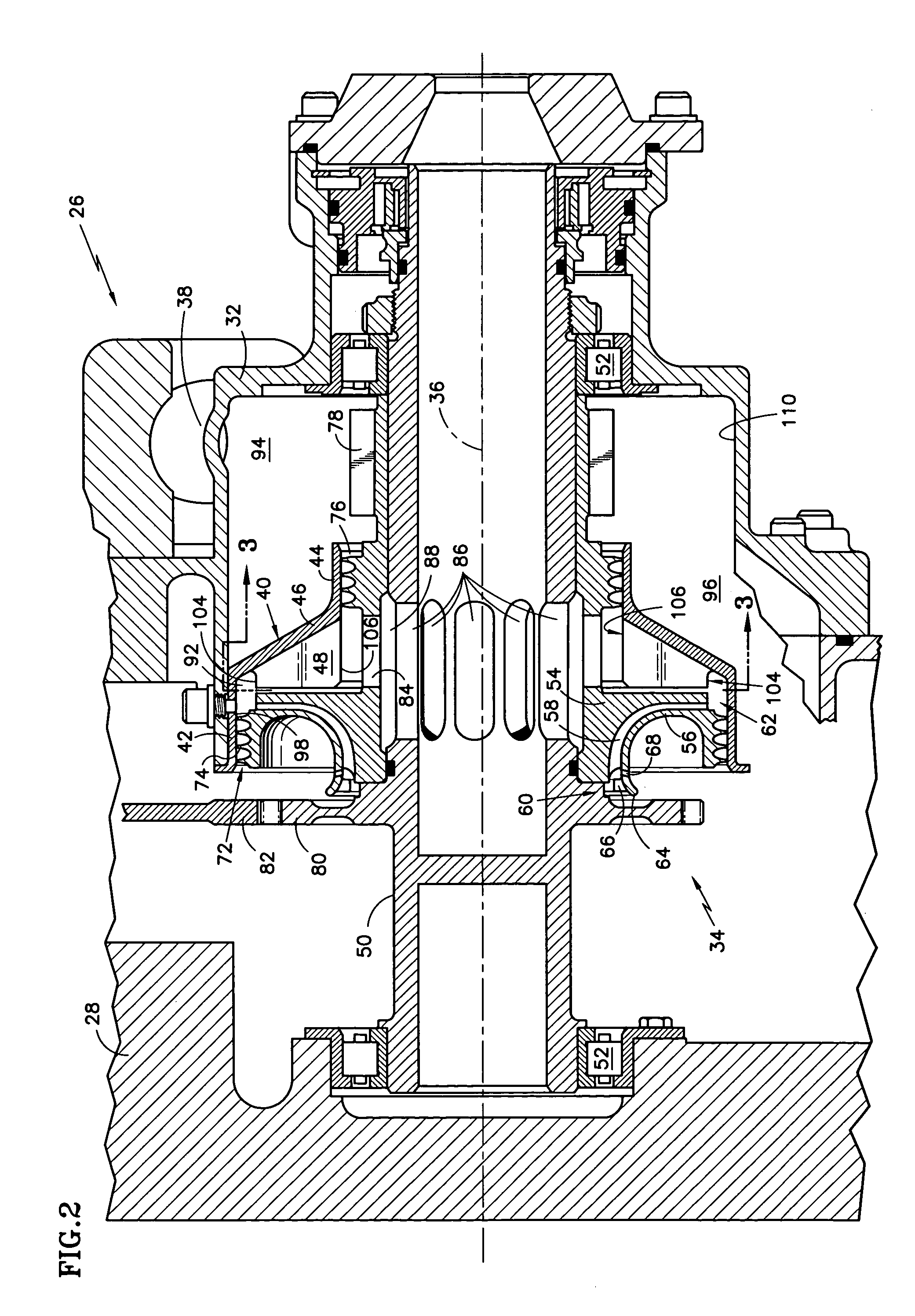Deoiler for a lubrication system
a lubrication system and deoiler technology, applied in the direction of machines/engines, liquid fuel engines, separation processes, etc., can solve the problems of unfavorable high idle power setting, unfavorable high idle setting, and compromising lubricating and heat transfer properties, so as to resist excessive buffer air infiltration and reduce air pressure
- Summary
- Abstract
- Description
- Claims
- Application Information
AI Technical Summary
Benefits of technology
Problems solved by technology
Method used
Image
Examples
Embodiment Construction
[0020]Referring to FIG. 1, a turbine engine shaft 10 is supported from the nonrotatable structure of the engine by bearings 12 so that the shaft is rotatable about a centerline axis 14. The bearings are enclosed in a bearing compartment 16 bounded by a compartment housing 18 and by the shaft. Seals 20 segregate the compartment from its immediate surroundings. These seals are imperfect, i.e. they allow some leakage, despite being designed and manufactured according to exacting standards.
[0021]A lubrication system22 includes a lubricant supply subsystem 24 comprising a pump, an oil tank, supply lines, and other components not illustrated. The supply subsystem introduces oil into the bearing compartment. The lubrication system also includes a deoiler 26, which is typically enclosed inside an engine gearbox 28. The lubrication system also includes a buffering subsystem 30, which extracts pressurized air, referred to as buffer air, from the engine's working medium flowpath and delivers i...
PUM
| Property | Measurement | Unit |
|---|---|---|
| nonzero angle | aaaaa | aaaaa |
| angle | aaaaa | aaaaa |
| pressure | aaaaa | aaaaa |
Abstract
Description
Claims
Application Information
 Login to View More
Login to View More - R&D
- Intellectual Property
- Life Sciences
- Materials
- Tech Scout
- Unparalleled Data Quality
- Higher Quality Content
- 60% Fewer Hallucinations
Browse by: Latest US Patents, China's latest patents, Technical Efficacy Thesaurus, Application Domain, Technology Topic, Popular Technical Reports.
© 2025 PatSnap. All rights reserved.Legal|Privacy policy|Modern Slavery Act Transparency Statement|Sitemap|About US| Contact US: help@patsnap.com



